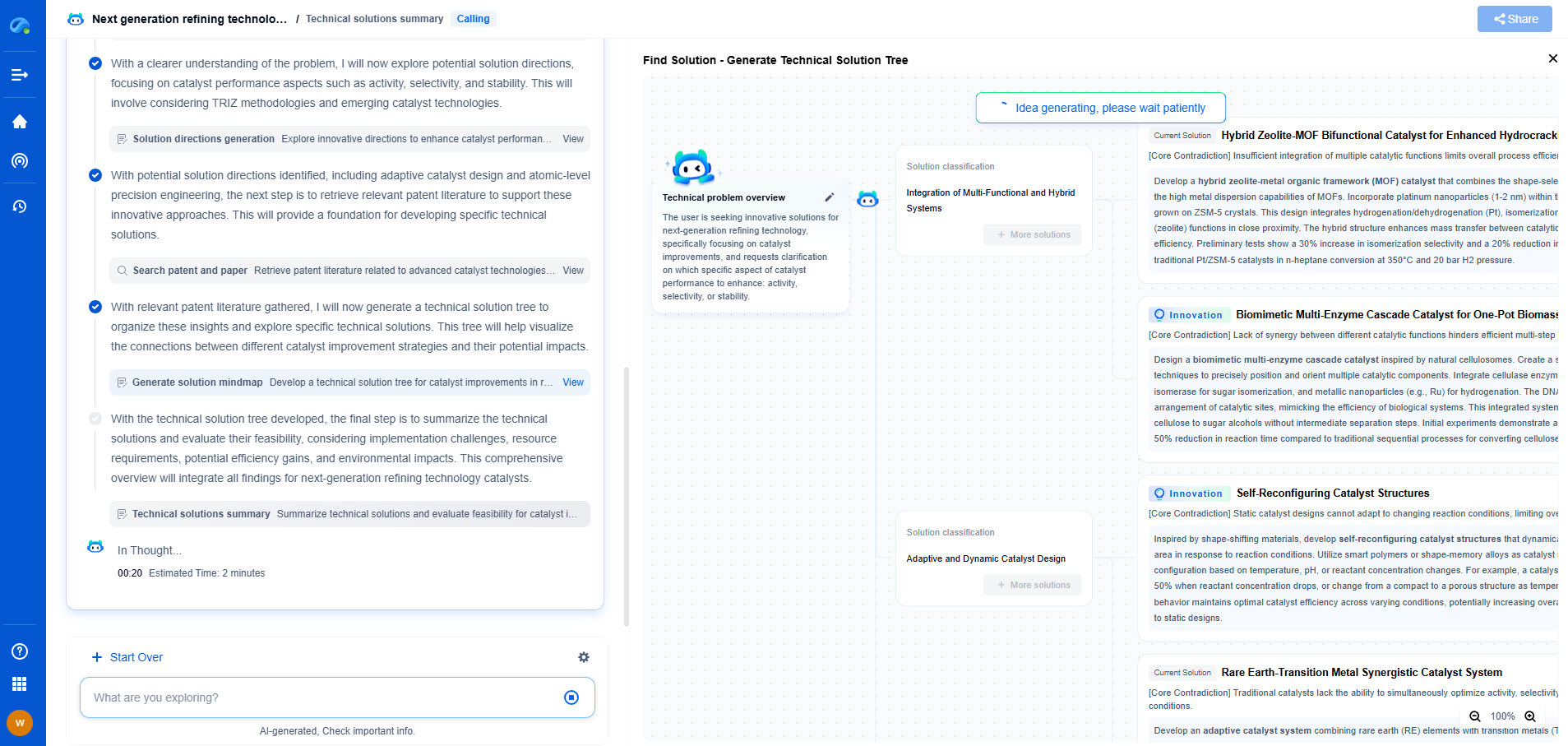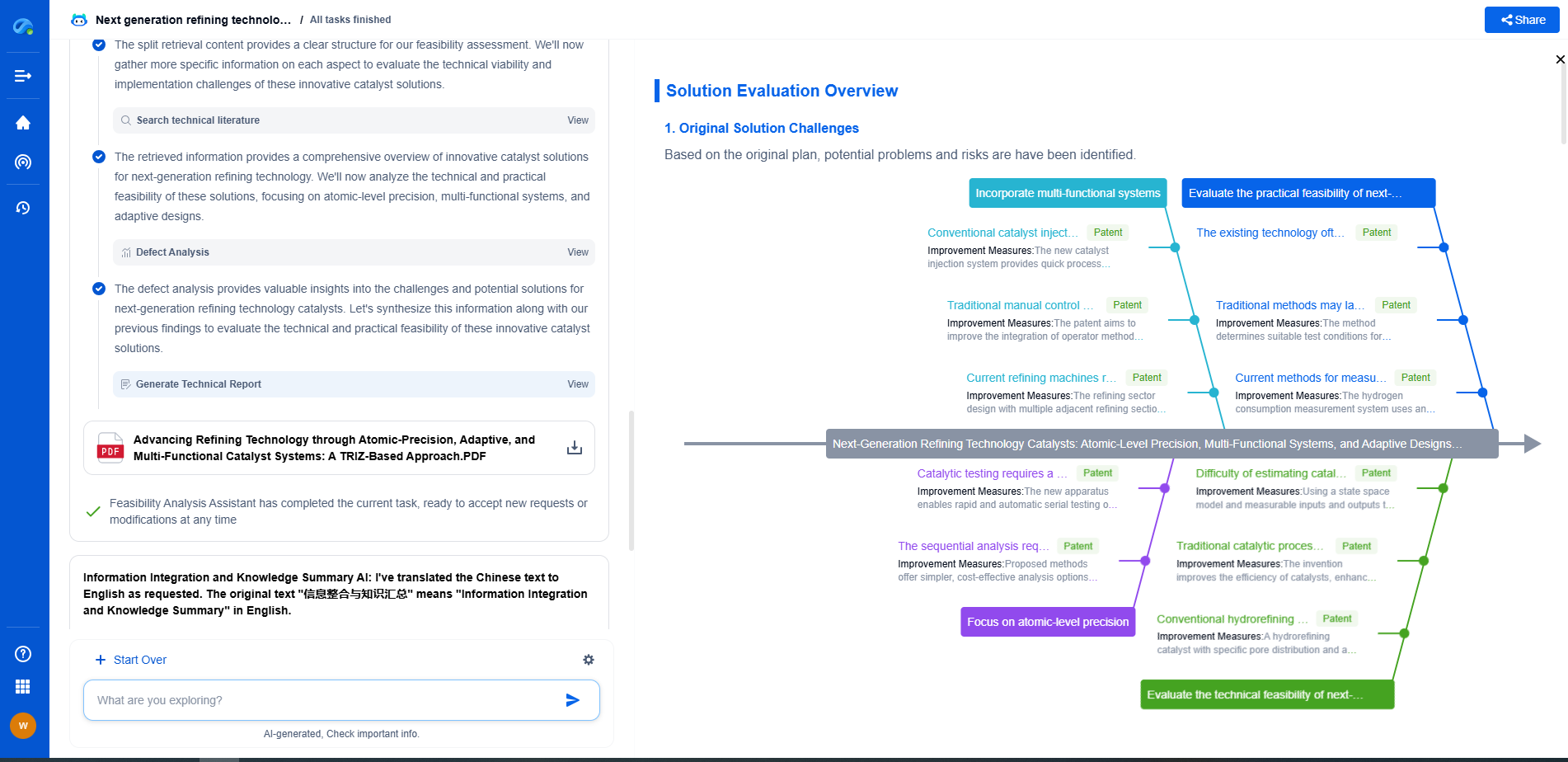How HVAC Systems Use Pressure Sensors for Optimal Climate Control
JUL 14, 2025 |
In modern buildings, maintaining a comfortable and consistent indoor climate is crucial for both occupant well-being and energy efficiency. Heating, Ventilation, and Air Conditioning (HVAC) systems are at the heart of this endeavor, and pressure sensors play a pivotal role in their optimal operation. These devices help monitor and control various aspects of the HVAC system, ensuring that it operates efficiently and effectively.
The Role of Pressure Sensors in HVAC Systems
Pressure sensors are instrumental in HVAC systems as they provide critical data regarding the pressure levels within different components of the system. By accurately measuring pressure, these sensors help in maintaining the balance needed for optimal performance. They are used in various parts of the HVAC system, including air ducts, refrigerant lines, and ventilation systems.
Enhancing Energy Efficiency
One of the significant advantages of using pressure sensors in HVAC systems is the enhancement of energy efficiency. HVAC systems consume a considerable amount of energy, and optimizing their operation can lead to substantial energy savings. Pressure sensors help achieve this by providing real-time data that can be used to adjust the system's operation, preventing unnecessary energy consumption. For instance, sensors can detect when a filter is clogged and needs replacing, allowing the system to operate without excessive energy use.
Maintaining Indoor Air Quality
Pressure sensors also contribute to maintaining indoor air quality. They monitor the airflow within the HVAC system and ensure that it is consistent and adequate for proper ventilation. By detecting changes in pressure, these sensors can alert the system to potential issues such as blockages or leaks. This ensures that fresh air is circulated properly, preventing the build-up of pollutants and maintaining a healthy indoor environment.
Optimizing Climate Control
Climate control is a critical aspect of HVAC systems, and pressure sensors help optimize this function. By providing accurate pressure readings, these sensors enable precise control over temperature and humidity levels within a building. This is particularly important in environments that require specific climate conditions, such as data centers or hospitals. Pressure sensors ensure that the system responds quickly to changes in demand, maintaining the desired climate settings efficiently.
Preventing System Failures
Regular monitoring of pressure levels in HVAC systems can prevent potential failures. Pressure sensors provide early warnings of issues such as refrigerant leaks or compressor failures, allowing for timely maintenance and repairs. By preventing these failures, pressure sensors not only enhance the reliability of HVAC systems but also extend their lifespan, reducing the need for costly replacements.
Future Trends in HVAC Pressure Sensor Technology
The role of pressure sensors in HVAC systems is expected to grow as technology advances. Future trends include the integration of smart sensors that can provide even more detailed data for improved system performance. These sensors may offer predictive maintenance capabilities, alerting facility managers to potential issues before they become serious problems. Additionally, advancements in wireless technology may enhance the ease of installation and monitoring of pressure sensors in HVAC systems.
Conclusion
Pressure sensors are indispensable tools in the optimization of HVAC systems. By enhancing energy efficiency, maintaining indoor air quality, optimizing climate control, and preventing system failures, they contribute significantly to the performance and reliability of these systems. As technology continues to evolve, pressure sensors will likely play an even more critical role in creating comfortable and energy-efficient indoor environments.
From 5G NR to SDN and quantum-safe encryption, the digital communication landscape is evolving faster than ever. For R&D teams and IP professionals, tracking protocol shifts, understanding standards like 3GPP and IEEE 802, and monitoring the global patent race are now mission-critical.
Patsnap Eureka, our intelligent AI assistant built for R&D professionals in high-tech sectors, empowers you with real-time expert-level analysis, technology roadmap exploration, and strategic mapping of core patents—all within a seamless, user-friendly interface.
📡 Experience Patsnap Eureka today and unlock next-gen insights into digital communication infrastructure, before your competitors do.
- R&D
- Intellectual Property
- Life Sciences
- Materials
- Tech Scout
- Unparalleled Data Quality
- Higher Quality Content
- 60% Fewer Hallucinations
Browse by: Latest US Patents, China's latest patents, Technical Efficacy Thesaurus, Application Domain, Technology Topic, Popular Technical Reports.
© 2025 PatSnap. All rights reserved.Legal|Privacy policy|Modern Slavery Act Transparency Statement|Sitemap|About US| Contact US: help@patsnap.com

